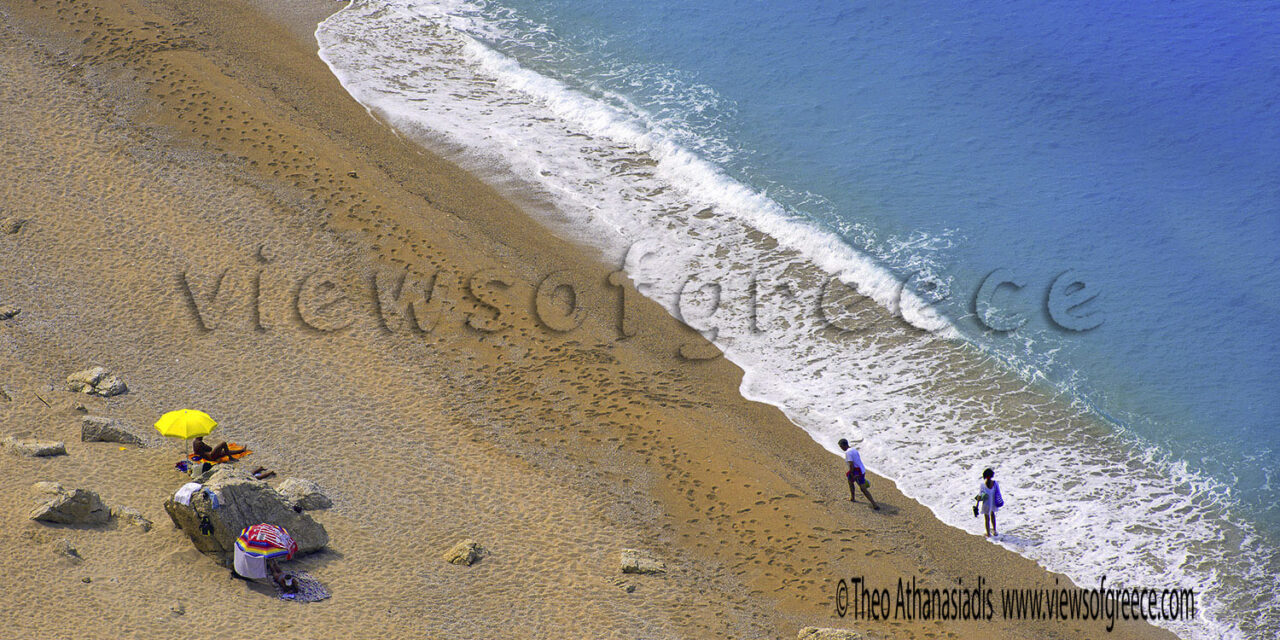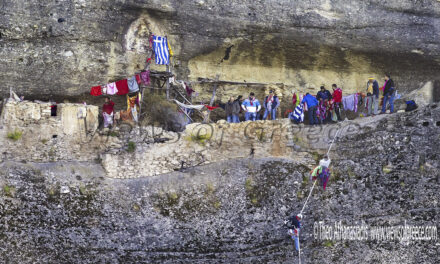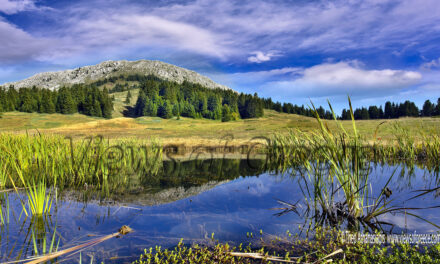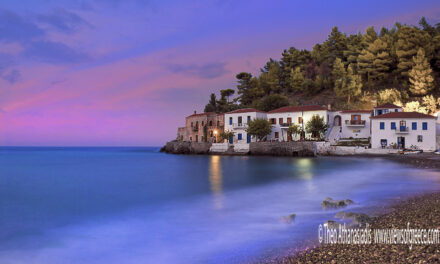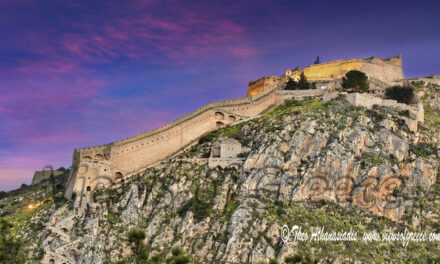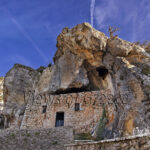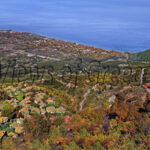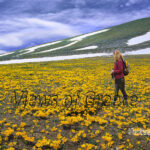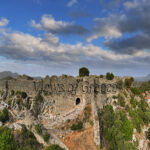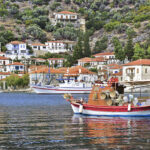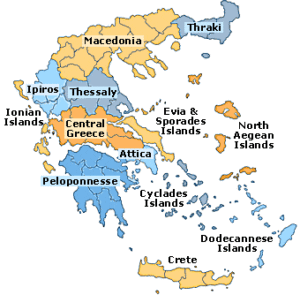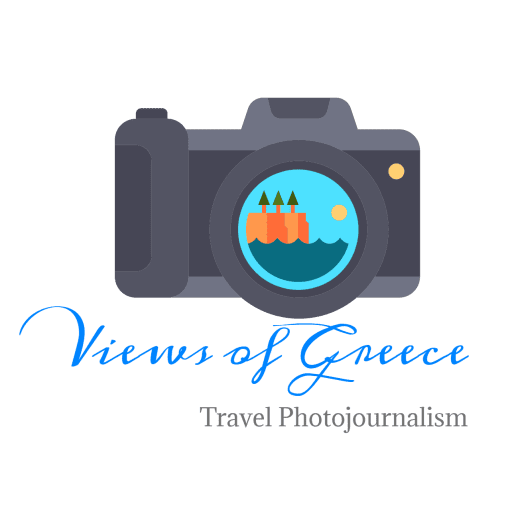Its amazing coastline -one of the best in the Mediterranean Sea- but also its strong mountainous character, hide some famous stunning natural landmarks of a popular summer destination, as it is one of the most accessible by car islands in the country.
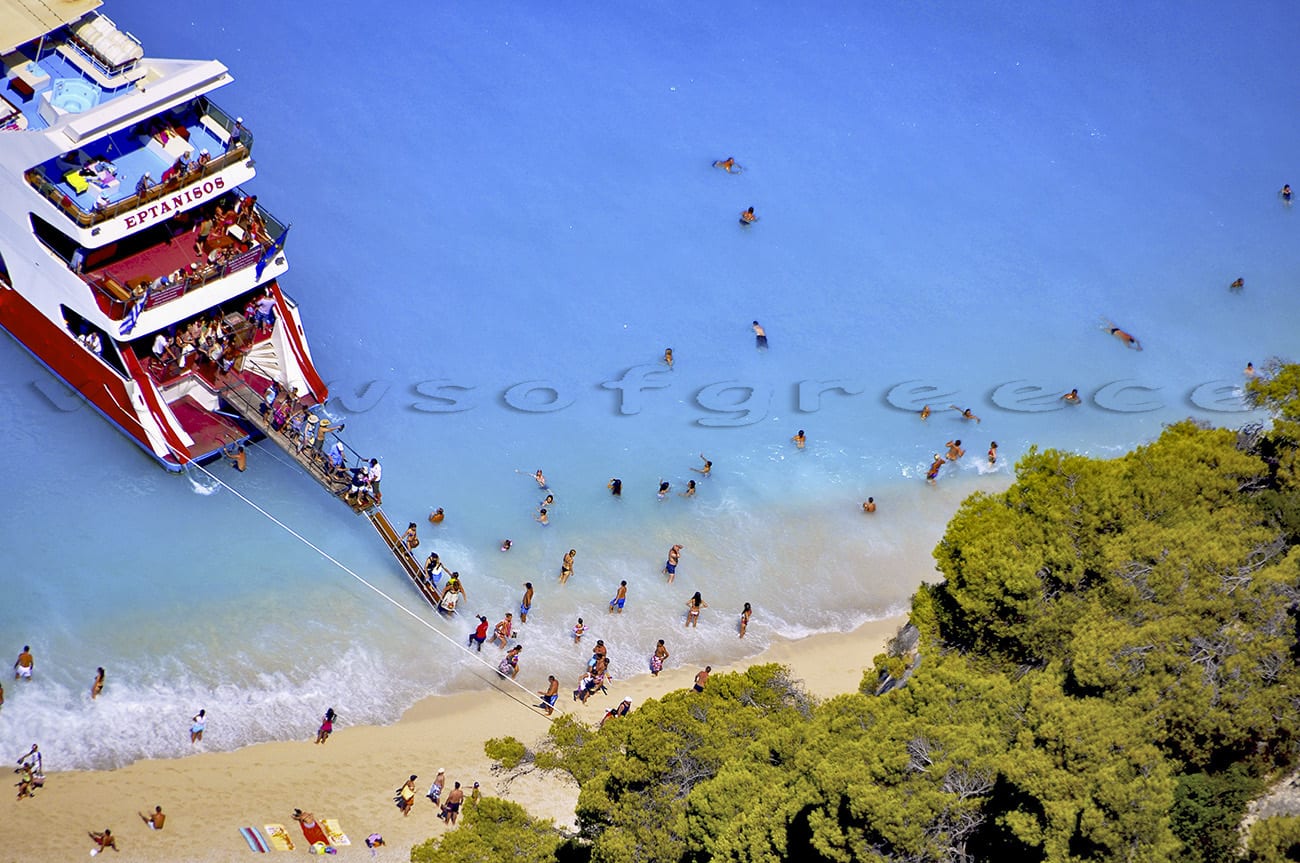
COPYRIGHT PHOTO: Theo Athanasiadis / Views Of Greece
First impressions
Organised beaches, buzzing resorts, popular marinas and frequented harbours by tens of pleasure crafts… are just some aspects of Lefkada tourist profile. However, behind this mass-tourism scenery lies another world, less stilted, but holding just as much excitement in a different way. You can discover it in island’s remote beaches, or in the emerald green islets dotted around the coastline and the verdant hinterland. Lefkada located extremely close to the mainland’s shore, thus it can be easily accessible by car by-passing the necessity of a boat trip.
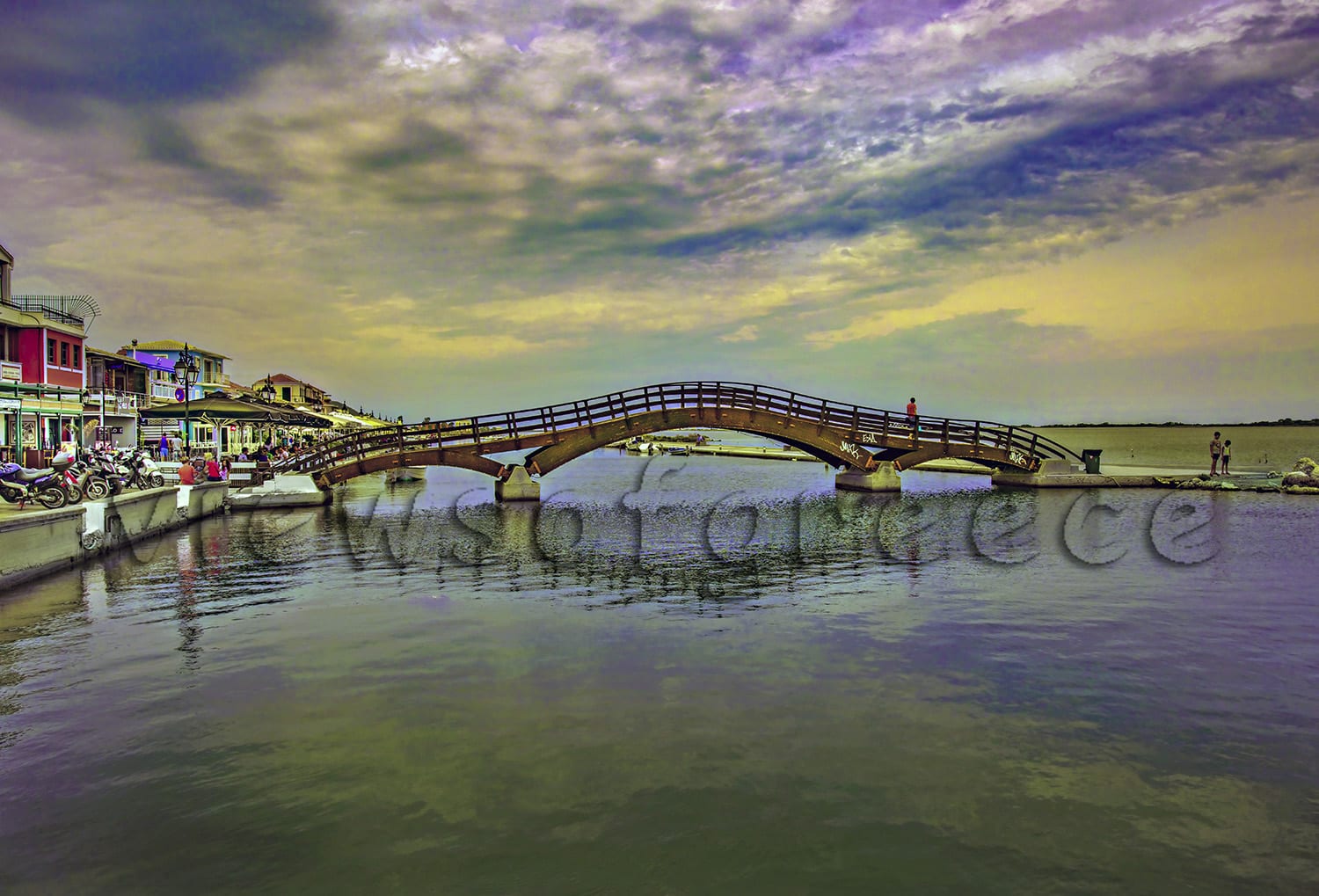
COPYRIGHT PHOTO: Theo Athanasiadis / Views Of Greece
History at a glance
In ancient times Lefkada was a peninsula. In fact it is said that the ancient Corinthians cut off the thin strip of land that connected the island to the mainland. Ancient Nirikos was the capital at the time, and today has been traced in the village of Kalligoni. Persian wars found the island during a boom period as it had developed commercial ties with all the Mediterranean’s major ports. In 197 BC when the Romans conquered Western Greece, the island was brought within the jurisdiction of Nicopolis, a powerful inland city of the region. Over the years Lefkada followed the fate of the rest of the Ionian Islands.
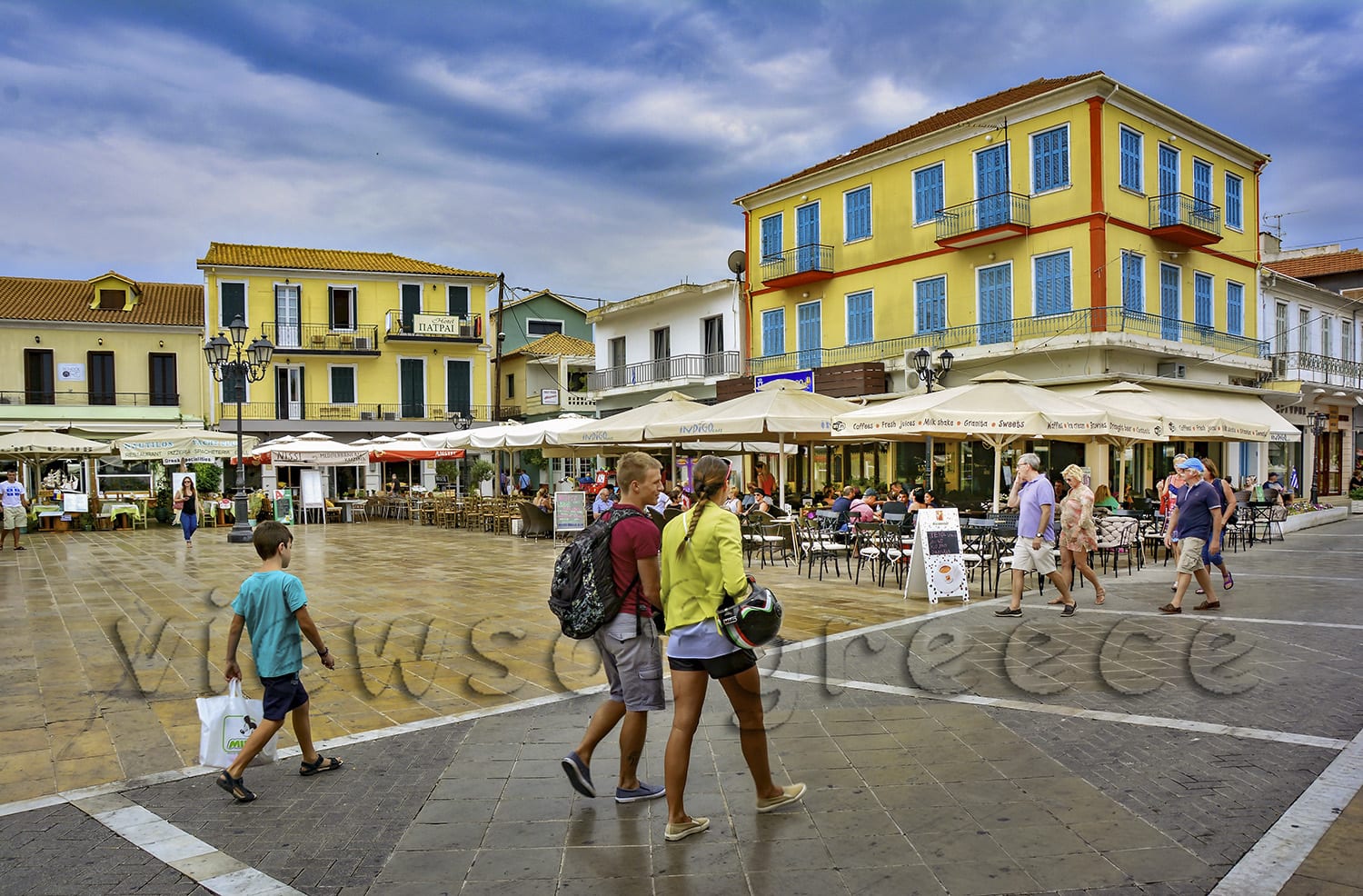
COPYRIGHT PHOTO: Theo Athanasiadis / Views Of Greece
Walks in the city
Crossing the floating bridge that links Lefkada to the mainland of Greece, you can pay a visit to Santa Maura medieval castle and then start wandering around the neighbourhoods of the island’s capital. Strolling down Angelou Sikelianou St., which runs along the southern coast, you can see the old but well preserved traditional two-storey buildings in neoclassical style , lining the seafront. The Church of Panagia Xenon and the old ones of Agios Spyridon and Christ Pantocrator (17th century) are situated a short distance away.
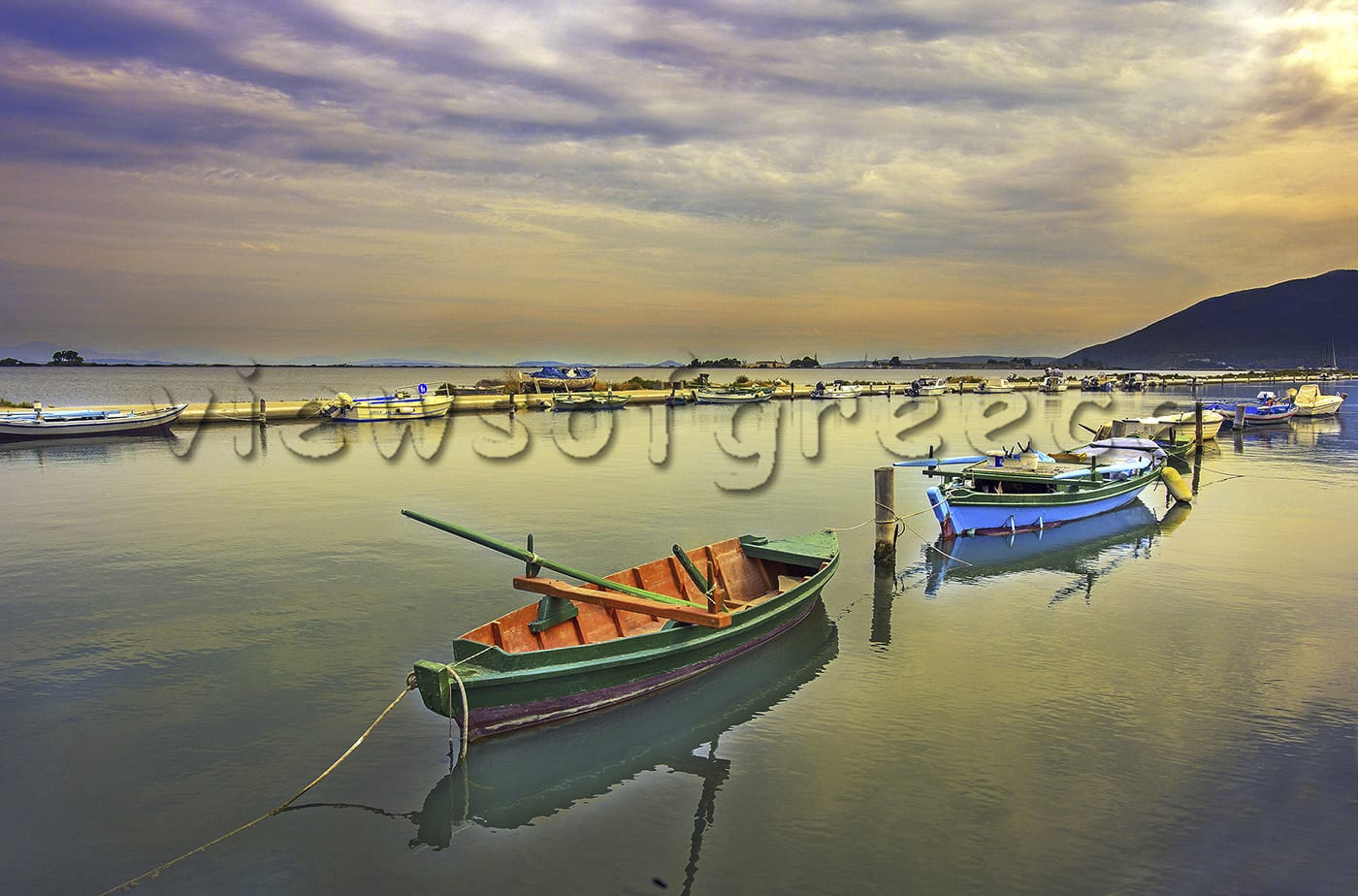
COPYRIGHT PHOTO: Theo Athanasiadis / Views Of Greece
Museums
Archaeological Museum 26450 21635
Phonograph Museum: An interesting privately-owned museum 26450 21088
Lefkadian Embroidery Museum (in the mountain village of Karya) 26450 41590
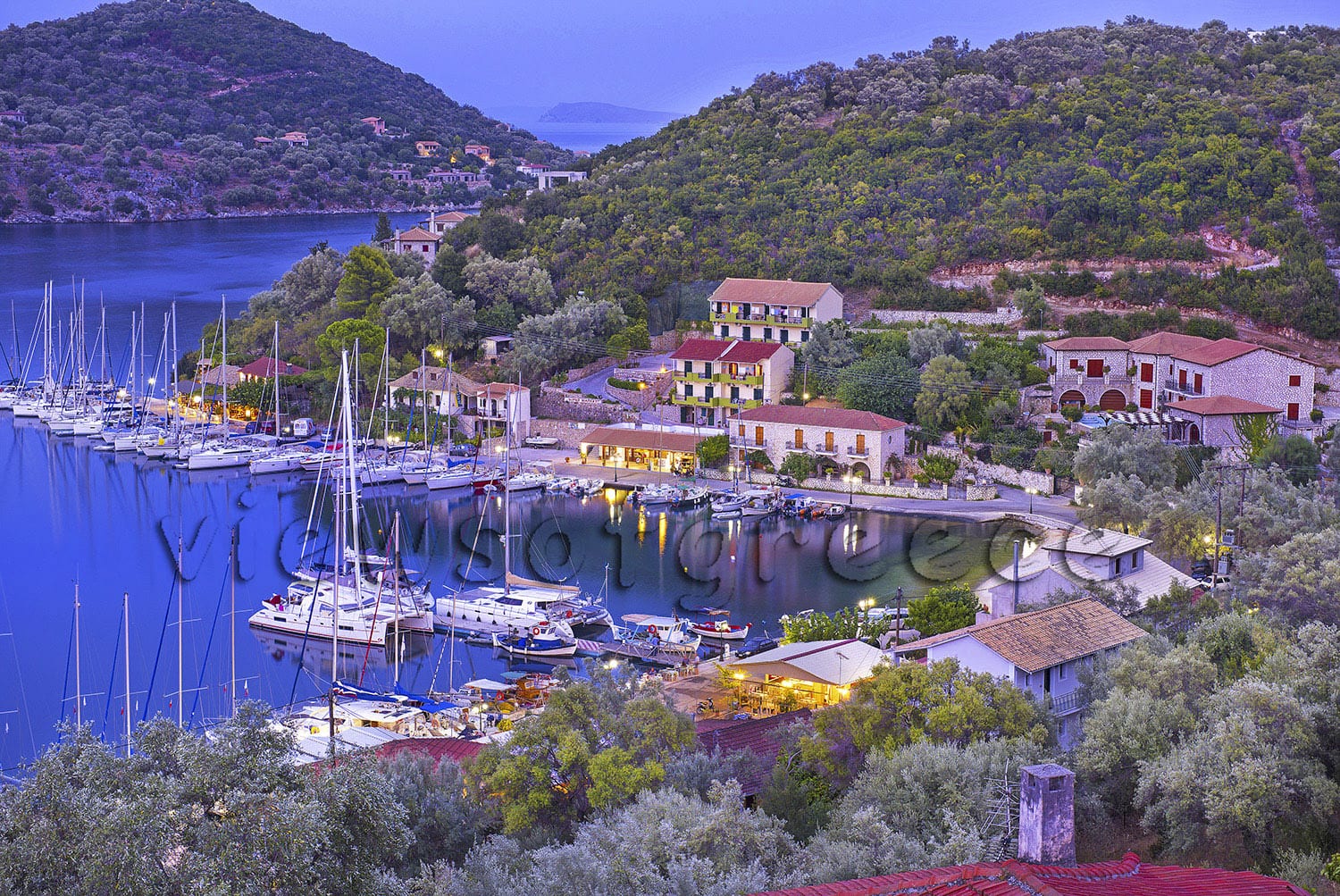
COPYRIGHT PHOTO: Theo Athanasiadis / Views Of Greece
The beaches
East coast: Taking the road that heads south of Lefkada town, you will pass through Lygia, Nikiana, Pergiali and come to Nydri resort which was made famous among world-known celebrities by the Greek shipping magnate Aristotle Onassis whose privately-owned island “Skorpios”, lies just a short distance out to the sea.
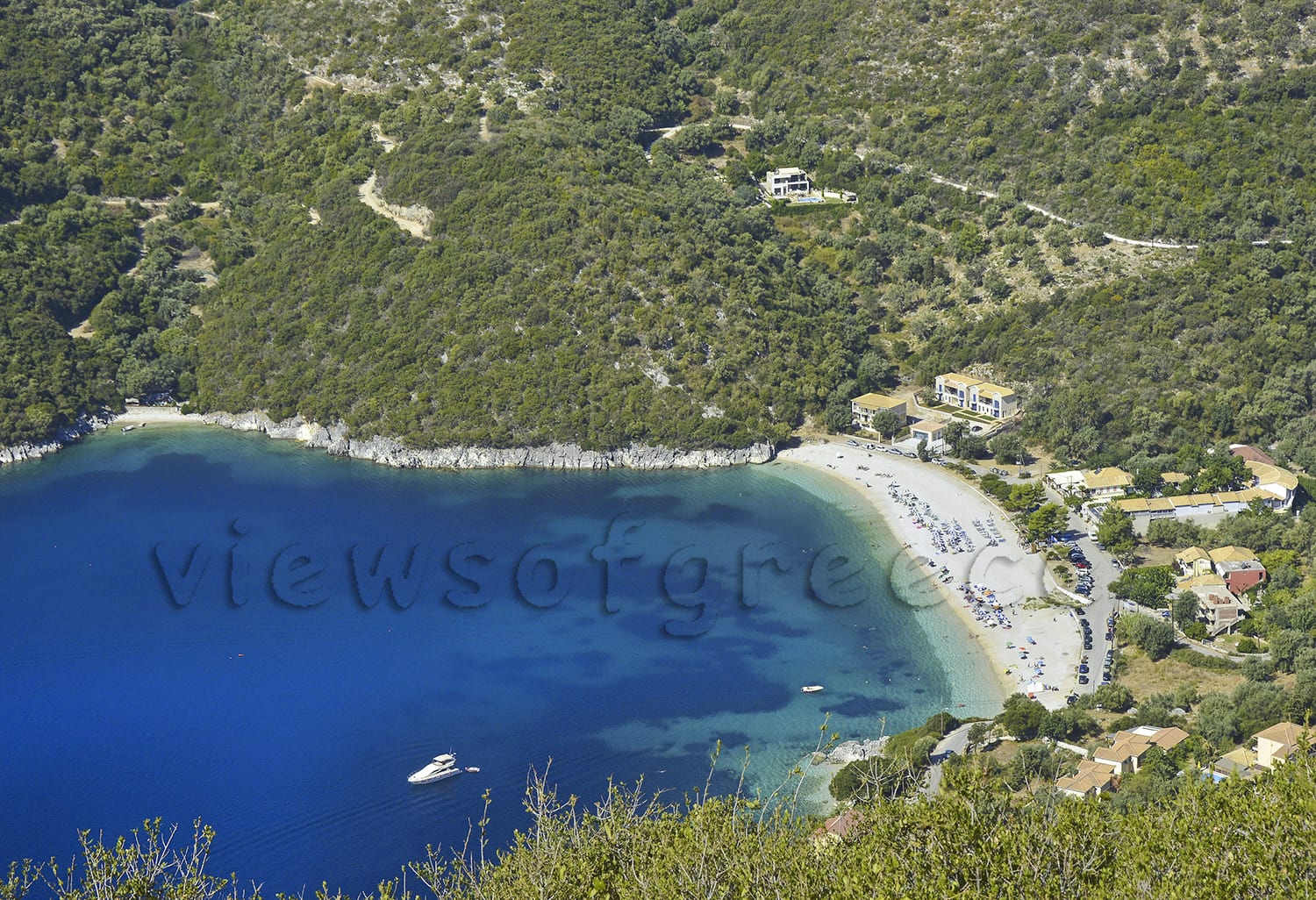
COPYRIGHT PHOTO: Theo Athanasiadis / Views Of Greece
The hidden Desimi bay, an excellent choice for swimming, is accessible from Vlycho. Next suggestion comes the pebbled Mikros Gialos beach(3 km far from Poros mountainous village).The road continues on to the fishing village of Syvota (no beach) and to Vasiliki Beach.
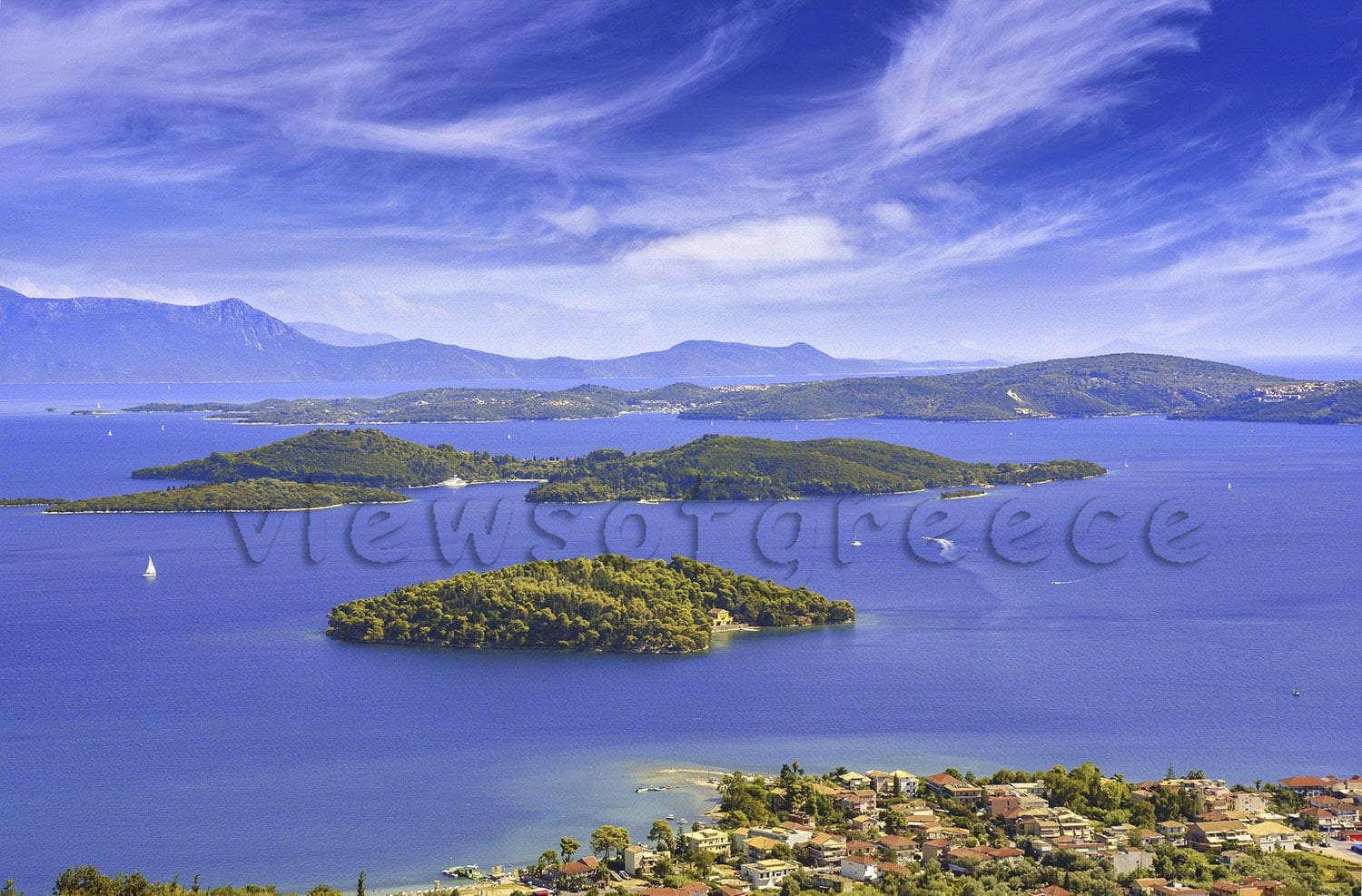
COPYRIGHT PHOTO: Theo Athanasiadis / Views Of Greece
Western coast: The route from Lefkada town to Agios Nikitas (14 km) passes through swathes of pine forest. Why not detour along the way and head down to the pebbled beaches of Kaminia, Gialos and Pefkoulia. A little to the south of Agios Nikitas(3 km), the exceptional sandy beach called Kathisma offers a whole host of amenities.
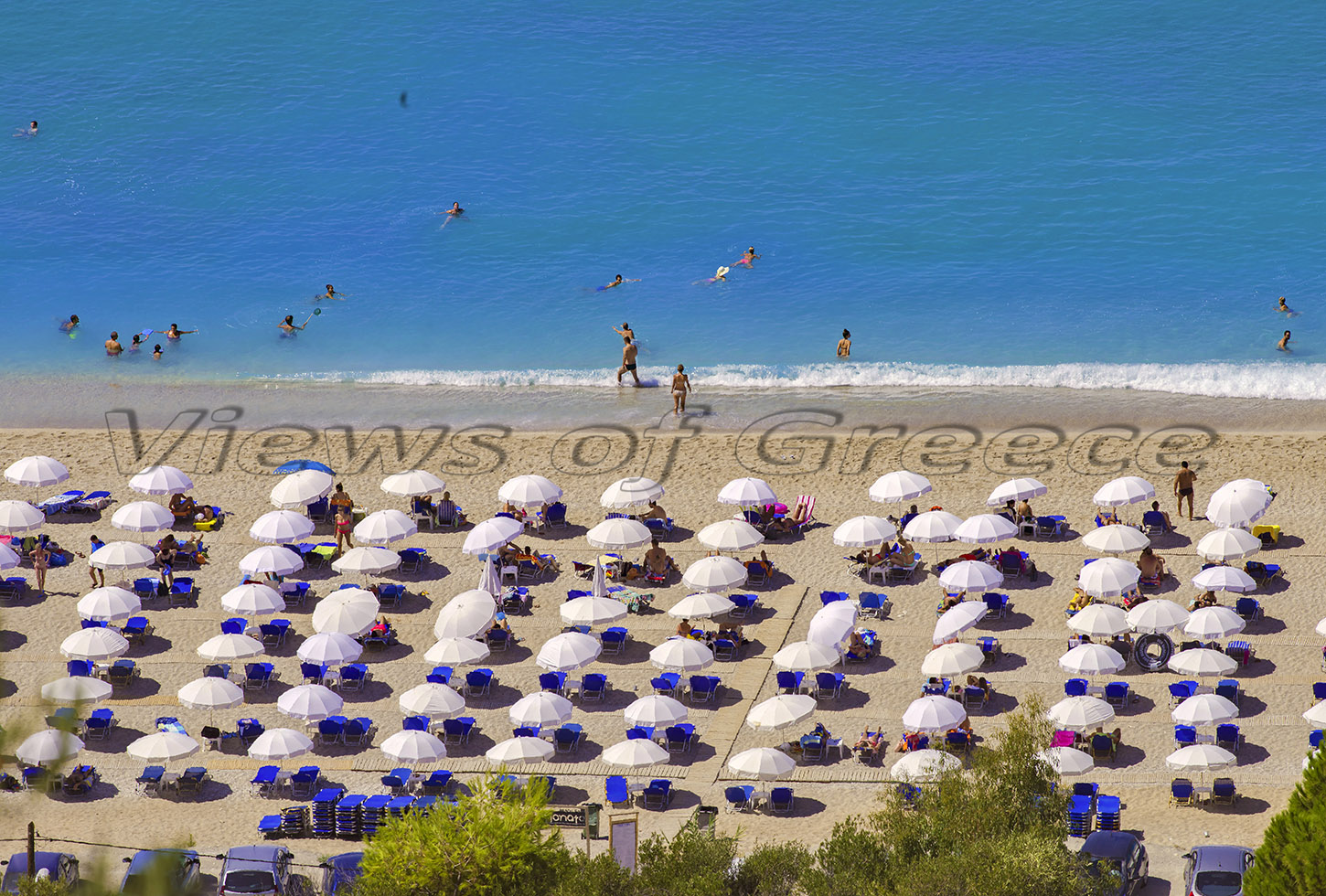
PHOTO: Theo Athanasiadis / Views Of Greece
Exotic beaches: South of Agios Nikitas lies the quiet beaches Avali, Theotokos and Gaidaros. The famous Porto Katsiki can be reached via Agios Petros mountainous village and then Athani. Anyone looking for less crowded spots, has to follow signs towards the tropical sandy shore Egremni, that can be reached by car via Athani village, though the road is windy indeed.
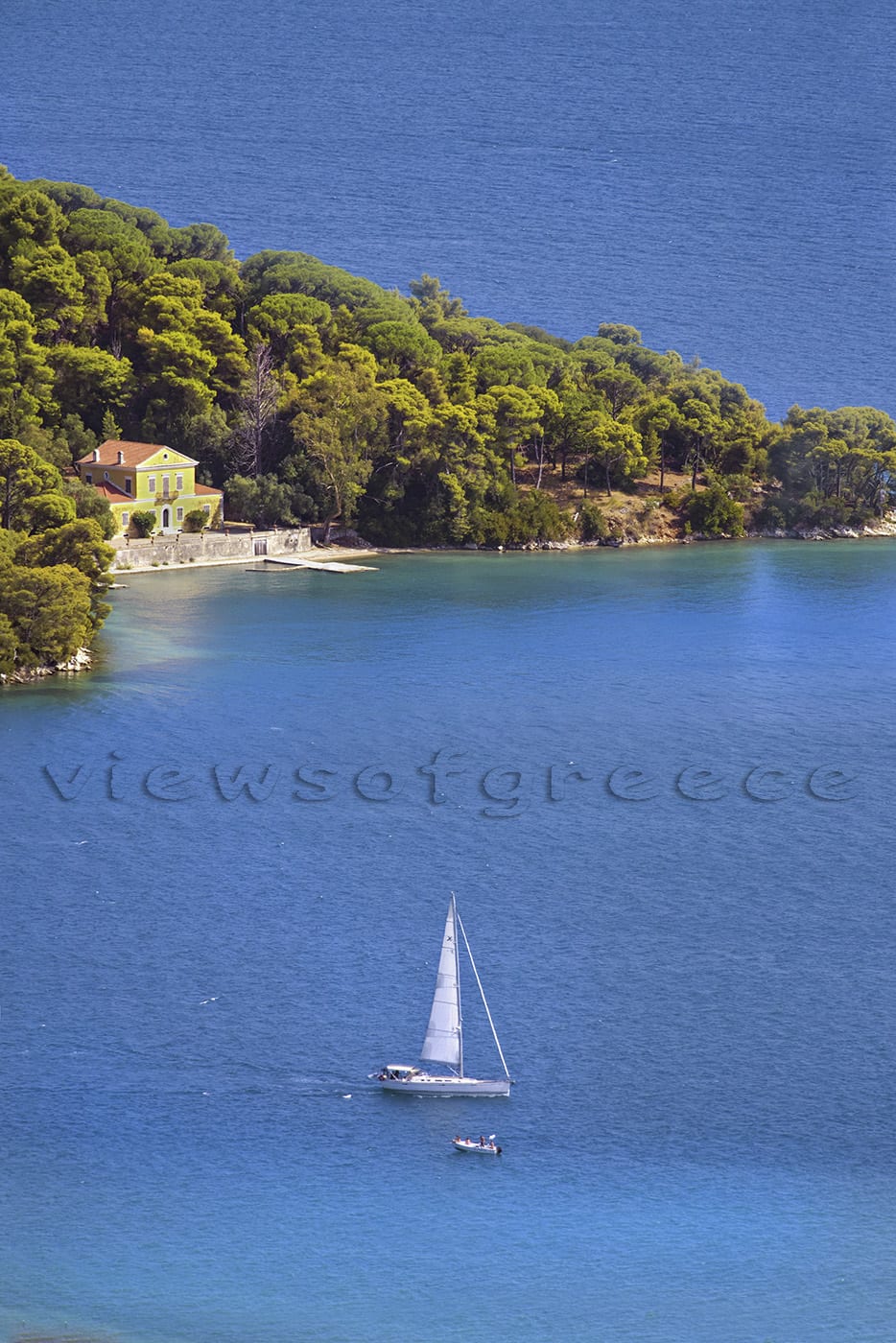
COPYRIGHT PHOTO: Theo Athanasiadis / Views Of Greece
Don’t miss
Lefkata Cape: The island owes its name to the rugged white cliffs of the cape. At this edgy spot, in antiquity there was a shrine dedicated to Apollo, from where cconvicted criminals were thrown off the steep coast. Whoever managed to survive, his life was spared! According to legend, this is the place where the goddess Aphrodite jumped into the Ionian Sea to quell her passion for Adonis, as well as the ancient poetess Sappho committed suicide by jumping off the rocks, and the cape also named after her ‘Lady’s Cape’ (“Kavos tis Kyras” in Greek).
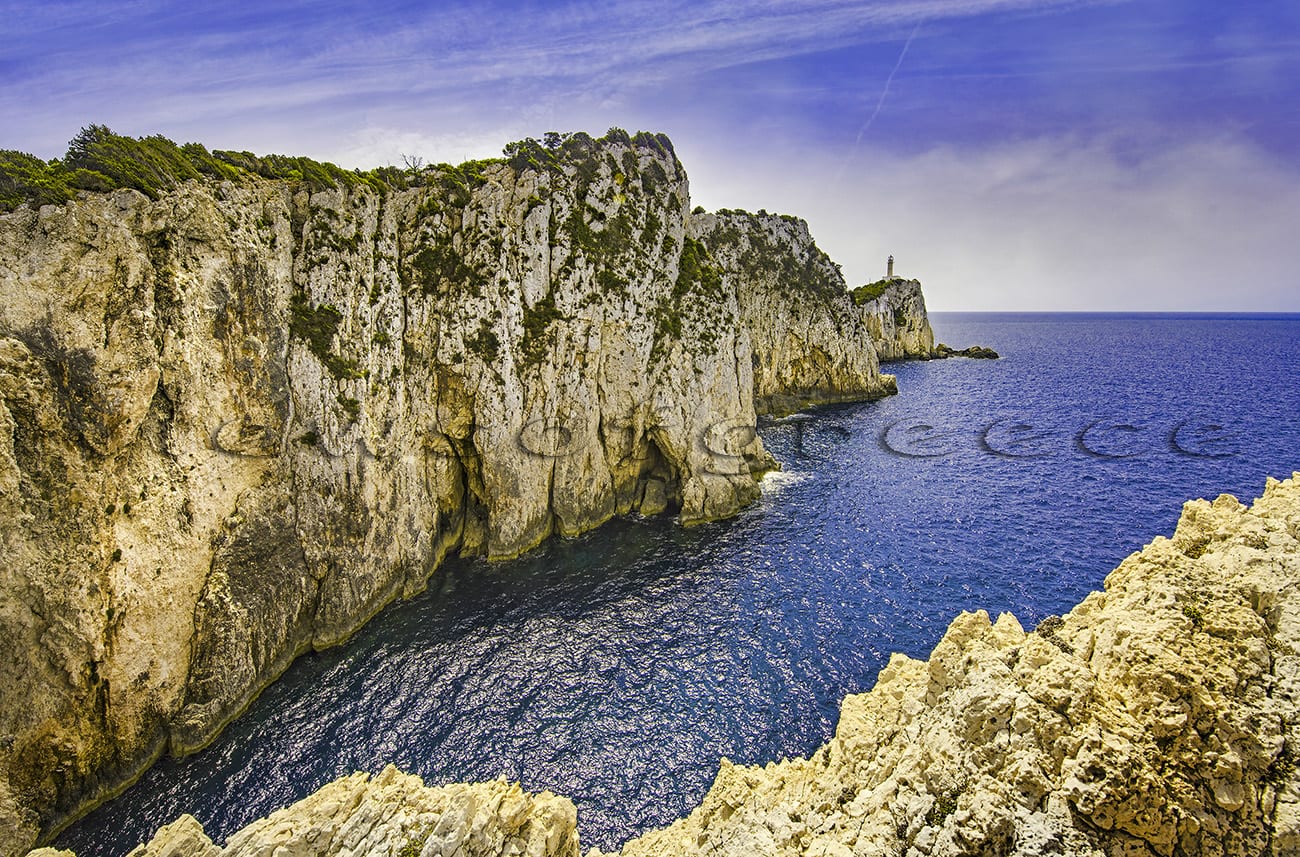
COPYRIGHT PHOTO: Theo Athanasiadis / Views Of Greece
Windsurfing at Vassiliki: The beach at Vasiliki village is among the top ten in the world for windsurfing! Similar conditions can be found at Ai Giannis Beach close to Lefkada town.
International Folklore Festival: Held every August by the Cultural Center of the Municipality of Lefkas with folk music groups participating from all over the world www.lefkasculturalcenter.gr
COPYRIGHT PHOTO: Theo Athanasiadis / Views Of Greece
COPYRIGHT TEXT: Germaine Alexakis/ Views Of Greece
“Views Of Greece” travel photojournalism: Discover the real Greece with the experts
According to the law:2121/1993 and the international treaty signed in Bern (which has been ratified with the law:100/1975) reproduction of this work is forbidden in any way, partially or on the whole, including texts or photographs alike without the written consent of the creator. Intellectual property is aquired without formalities and without the need for provision prohibiting its disputation.

